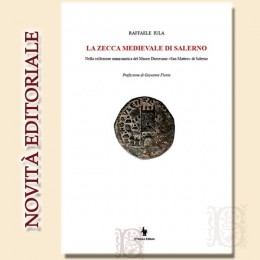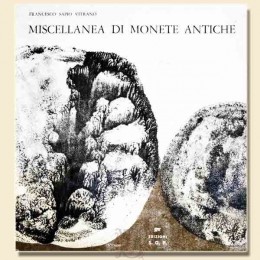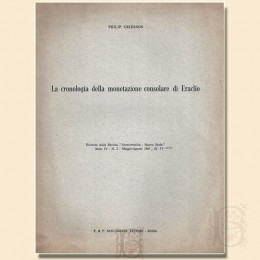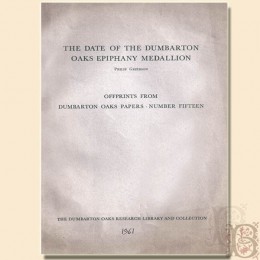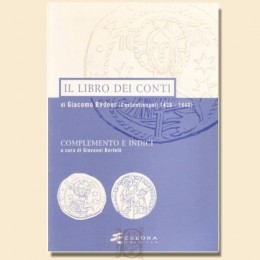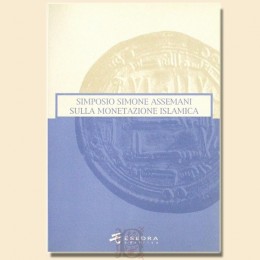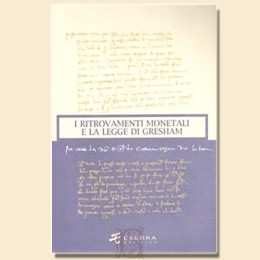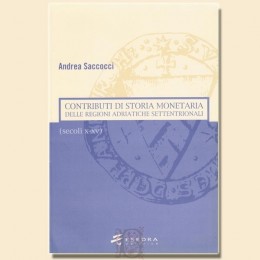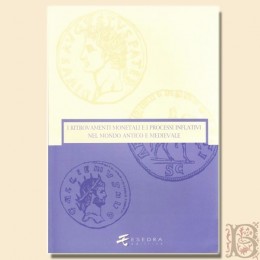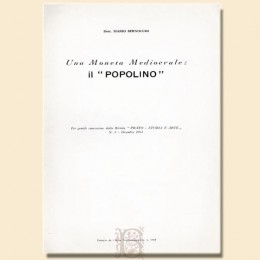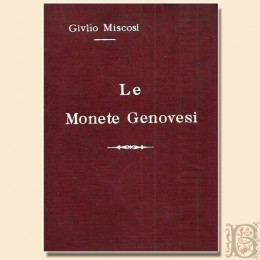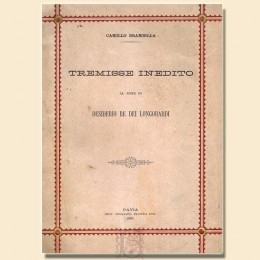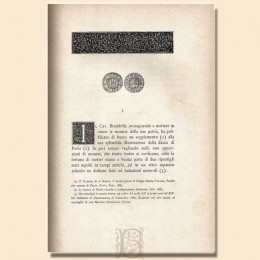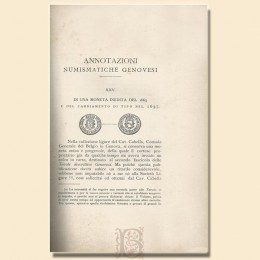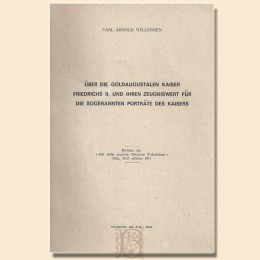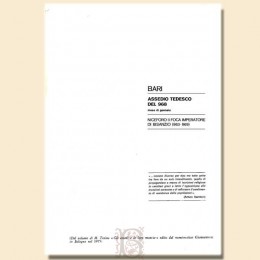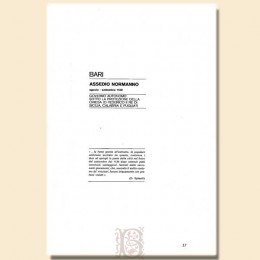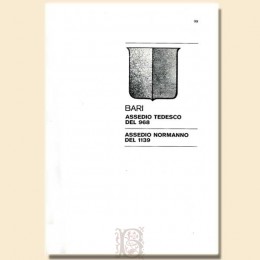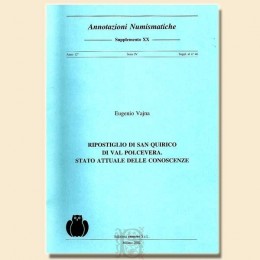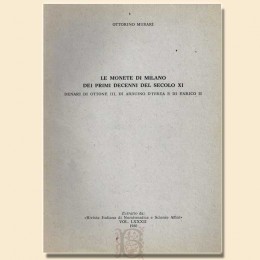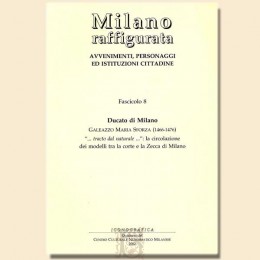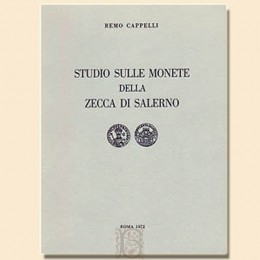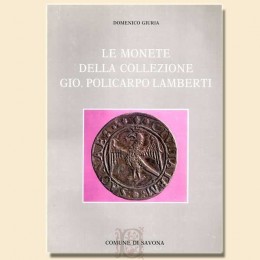Resources
Medieval numismatics
Welcome to the section dedicated to medieval numismatics books on Biblionumis.it, the reference point for scholars, collectors and enthusiasts of the monetary history of the Middle Ages. In this category, we offer you a wide selection of specialized texts that explore the fascinating world of medieval coins, from the collapse of the Roman Empire to the end of the Middle Ages. Each book in this category is a gateway to centuries of history, where coins are not only economic instruments, but true witnesses of the political, social and cultural changes of the Middle Ages. Whether they are Byzantine, Carolingian, Anglo-Saxon, European kingdoms or Italian mints, these volumes offer a detailed and in-depth analysis, enriched by images and precise cataloging. Our books are written by internationally renowned historians and numismatists, who guarantee accurate and detailed content. You will find complete catalogs, identification manuals and monographic studies that will guide you in understanding and evaluating medieval coins. These texts are essential tools for those who wish to deepen their knowledge or enrich their collection of medieval coins. Immerse yourself in the fascinating world of medieval numismatics with our books, designed to satisfy both experts and neophytes. Each volume is carefully selected to offer a complete and detailed vision of this historical period, enhancing numismatic and historical knowledge. Explore our collection of medieval numismatics books on Biblionumis.it now and enrich your library with fundamental works that will allow you to discover and understand the historical and cultural value of medieval coins.
-
Iula, The medieval mint of Salerno
€30.00Raffaele Iula, The medieval mint of Salerno. In the numismatic collection of the San Matteo Diocesan Museum of Salerno, Preface by Giovanni Florio, photographs by Giuseppe Tesauro Falivene, D'Amico Editore, Nocera Superiore 2017, pp. 188, richly illustrated, 30 cm, br. ed., ISBN 978-88-99821-02-9.
Series of numismatic studies Il tornese, 2.
The text presents the numismatic collection, never published before, of the Diocesan Museum of Salerno. The pieces that constitute it, all in copper, range from the Lombard period with the coins of Gisulfo II (1052-1077) and end with the Swabian occupation of the Kingdom of Sicily by Henry VI (1194-1197) and Costanza d ' Altavilla, covering a very large time span. The catalog is preceded by a substantial introduction, in which new considerations on the Salerno mint are proposed.
New one.
-
Sapio Vitrano, Miscellaneous of...
€40.00Francesco Sapio Vitrano, Miscellaneous of ancient coins, General advertising society, Palermo 1966, pp. 157, 37 tablets reproducing coins + 1 tablet folded map, 28 cm, solid binding in all editorial canvas with dust jacket.
Limited edition work. Numbered and signed by the author.
Dust jacket with traces of use, some tears and minimal defects, slight blooms in the text, otherwise in good condition.
Rare.
-
Grierson, The chronology of the...
€22.00Philip Grierson, The chronology of the consular coinage of Heraclius, P. & P. Santamaria Editori, Rome 1963, pp. 4, 28 cm.
Extract from: Numismatics, a. IV, n. 2.
Publication embellished with an autograph dedication and some corrections to the text by numismatist Philip Grierson.
Very good condition. Extremely rare.
-
Grierson, The date of the...
€22.00Philip Grierson, The date of the Dumbarton Oaks Epiphany medallion, The Dumbarton Oaks research library and collection, Washington 1961, pp. 221-224, 30 cm, br. and.
Offprints from Dumbarton Oaks papers, n. 15.
Publication embellished with an autograph dedication by numismatist Philip Grierson.
Very good condition. Extremely rare.
-
Giacomo Badoer's book of...
€44.00The book of accounts by Giacomo Badoer (Constantinople 1436-1440). Complement and indexes, edited by Giovanni Bertelè, Esedra Editrice, Padua 2002, pp. 257, cm 27, br. and.
Numismatica Patavina, 2. Series directed by Giovanni Gorini.
New one.
-
Simone Assemani Symposium on...
€34.00Simone Assemani Symposium on Islamic Coinage. Padua, II International Congress of Numismatics and Monetary History. Padua 17 May 2003. Civic Museums at the Eremitani-Bottacin Museum (Library), Esedra Editrice, Padua 2005, pp. 253, richly illustrated, 27 cm, br. and.
Numismatica Patavina, 7. Series directed by Giovanni Gorini.
The volume collects the contributions proposed in the second International Numismatic Congress (Padua, May 2003) during which, in memory of the orientalist Simone Assemani (Rome 1752-Padua 1821), some of the most important scholars of Islamic numismatics met. After some insights into the role of Assemani, who is at the beginning of the studies of Islamic coinage, various aspects of this particular area of research are illustrated: relations with Western issues, finds in archaeological excavations and monetary circulation, collecting.
New one.
-
Monetary finds and Gresham's law
€32.00Monetary finds and Gresham's law. Proceedings of the III International Congress of Numismatics and Monetary History. Padua 28-29 October 2005, edited by Michele Asolati, Giovanni Gorini, Esedra Editrice, Padua 2006, pp. 222, richly illustrated, 27 cm, br. and.
Numismatica Patavina, 8. Series directed by Giovanni Gorini.
The expression "Gresham's Law" identifies the economic-monetary phenomenon according to which "bad money drives out good", that is, the practice that leads to spending, for the same face value, the coins with the worst metal content and to storing and accumulating those with better content. In the past, this practice had a fundamental importance and significant implications at a historical-economic level, but still today it continues to play a role, for example by pushing us to spend the most creased banknote and to keep the printable one. This book collects the contributions proposed during the III International Congress of Numismatics and Monetary History (Padua, October 28-29, 2005) on the theme of Gresham's Law and monetary finds. In particular, the results it had in the Greek, Celtic, Roman, Byzantine and medieval European world are examined in depth and its "paternity" is also discussed: attributed to Sir Thomas Gresham (ca. 1519-1579) in the second half of the nineteenth century , more likely, it can be traced back to Italian environments in which the phenomenon was already known and theorized a century earlier. The volume also includes as an appendix the re-edition of the contribution Uses and abuses of Gresham's Law in the History of Money by Robert Mundell, professor of Economics at Columbia University in New York and Nobel Prize in Economics in 1999.
New one.
-
Saccocci, Contributions to the...
€32.00Andrea Saccocci, Contributions of monetary history of the northern Adriatic regions (X-XV centuries), Esedra Editrice, Padua 2004, pp. 250, richly illustrated, 27 cm, br. and.
Numismatica Patavina, 3. Series directed by Giovanni Gorini.
The purpose of this work is to scientifically illustrate the monetary characteristics of north-east Italy during the Middle Ages. However, it is precisely the attention to the men who are at the origin of every economic choice that has allowed the understanding of those mechanisms that made these regions a vast and highly homogeneous money market. Market that contributed not a little to the great mercantile success of the Serenissima.
New one.
-
Monetary finds and inflation...
€28.00Monetary finds and inflation processes in the ancient and medieval world. Proceedings of the IV International Congress of Numismatics and Monetary History. Padua 12-13 October 2007, edited by Michele Asolati, Giovanni Gorini, Esedra Editrice, Padua 2008, pp. 169, richly illustrated, 27 cm, br. and.
Numismatica Patavina, 9. Series directed by Giovanni Gorini.
The phenomenon of inflation, both as an increase in prices and as a debasement of money, is one of the most studied and debated in the studies of numismatics and ancient and medieval monetary history due to the undoubted repercussions on the contemporary world, which has always tried to limit it. the effects and to keep it under strict control. In fact, the real impact of the inflationary aspects on the economy of a historical period is very delicate and complex to study and understand, especially if we keep in mind the ancient and medieval monetary economies, which are sometimes quite precarious. This volume collects the contributions proposed during the IV International Congress of Numismatics and Monetary History (Padua, 12-13 October 2007) on the theme of the relationship between inflation and its effects on monetary finds. In particular, some aspects of the Greek and Roman world and the Italian medieval one are focused with a series of interventions by Italian and foreign scholars, who have faced this complex problematic analysis by proposing new solutions to old problems or advancing new research perspectives in the light of the documentation. that the continuous discoveries of coins, both isolated and in closets, bring to our attention for a critical and multidisciplinary approach.
New one.
-
Bernocchi, A medieval coin: the...
€20.00Mario Bernocchi, A medieval coin: the Popolino, Tip. A. Baruffaldi, Mantua 1964, pp. 14, ill., 25 cm.
Extracted from: Italia Numismatica, n.6, 1964.
Elegant ex libris on the back cover.
Very slight traces of use, otherwise in excellent condition. Extremely rare.
-
Miscosi, Genoese coins
€70.00Giulio Miscosi, The Genoese coins, published by the author, pp. 52 overall, richly illustrated, 24 cm, binding on the entire editorial canvas with titles and embossed decorations on the front plate.
Complete collection of Miscosi's numismatic publications, created by the amateur artist himself. The work includes the following works:
An unpublished page of pre-Roman Ligurian history. The historical and numismatic classification of the coins commonly known as Casella coins found in Crocetta d'Orero (near Genoa) in 1923, Genoa 1926, pp. 12, the original editorial paperback preserved.
Linked with: Ligurian origins. Three thousand years of Genoa. The Massili di Numidia (Neptunian knights). Follow-up to: Classification of Casella coins found in Crocetta d'Orero (near Genoa) in 1923, Genoa 1927, pp. 16, the original editorial paperback preserved.
Linked with: Genoese coins from the 5th century BC. C. to 1815 d. C., sn, slsa, pp. 8.
In excellent condition. Extremely rare.
-
Raffaele Iula, Introduction to...
€15.00Raffaele Iula, Introduction to Salerno numismatics, Editrice Diana, Italian Numismatic Cultural Association, Formia 2016, pp. 111, numerous illustrations bn and col., Cm 24, br. and.
Series: Nummus et Historia XXX.
Dissemination volume that effectively presents issues concerning the numismatics of Salerno. Aimed at enthusiasts and scholars of this coinage, it aims to provide a synthesis of the most common, but still little investigated aspects of the coins of the Salerno mint. In fact, the text deals with topics such as: the history of the studies that contributed to the increase in knowledge of these coins, the technical aspects concerning the minting of coins in the early medieval period, the artistic style in the various historical phases of the coin workshop. A substantial bibliography closes the text.
-
Brambilla, Tremisse unpublished...
€38.00Camillo Brambilla, Unpublished Tremisse in the name of Desiderio king of the Lombards, Fratelli Fusi Printing House, Pavia 1888, pp. 26, ill., Cm 28, editorial paperback with elegant embossed and gold decorations.
On the first page there is a beautiful original photograph applied to the albumin reproducing the coin object of the study.
In perfect condition. Extremely rare.
-
Desimoni, The first silver coins...
€35.00Cornelio Desimoni, The first silver coins of the mint of Genoa and their value (1139-1493), Tip. of the R. sordo-muti institute, Genoa 1889, pp. 177-223, ill., 28 cm, br. in lily paper.
Extract from: Proceedings of the Ligurian Society of Homeland History, vol. XIX.
Elegant ex libris on the back cover, on the first cover piece of paper taken from the sales price list from which the publication comes.
In excellent condition. Extremely rare.
-
Ruggero, Genoese numismatic...
€30.00Giuseppe Ruggero, Genoese numismatic annotations XXV, XXVI, XXVII, Cogliati, Milan 1895, pp. 167-197, ill., 28 cm, br. in gray cardboard with titles on the front cover.
Annotation XXV: Of an unpublished coin of 1663 and of the change of type in 1637.
Annotation XXVI: Obverse and reverse in the type of the Virgin.
Annotation XXVII: On the antiquity of the genovino d'oro.
Elegant ex libris on the last card, label belonging to the front cover.
Insignificant blooms on some cards, but overall exemplary in excellent condition.
Extremely rare.
-
Willemsen, Uber die...
€48.00Carl Arnold Willemsen, Uber die goldaugustalen kaiser Friedrichs II. Und ihren zeugniswert fur die sogenannten portrate des kaisers, Tipografia del Sud, Bari 1971, pp. 117-126, 5 tablets augustal reproductions, 25 cm.
Extract from: Proceedings of the second Federician Days. Oria, October 16-17, 1971.
In perfect condition. Of extreme rarity and scientific interest.
-
Trina, Bari. German siege
€9.00Mario Traina, Bari. German siege of 968. Month of January, sn, slsa, pp. 402-406, ill., 24 cm, br. in paper.
Extract from the work: The sieges and their coins (491-1861). Coins, medals and obsidional paper money beaten or issued in Italy and by Italians abroad, Bologna 1975-1977.
Some scholarly highlights, otherwise in excellent condition. Rare.
-
Trina, Bari. Norman siege
€15.00Mario Traina, Bari. Norman siege. August-September 1139, sn, slsa, pp. 17-24, ill., 25 cm, br. in paper.
Extract from the work: The sieges and their coins (491-1861). Coins, medals and obsidional paper money beaten or issued in Italy and by Italians abroad, Bologna 1975-1977.
In excellent condition. Rare.
-
Trina, Bari. German siege....
€24.00Mario Traina, Bari. German siege of 968. Norman siege of 1139, sn, slsa, pp. 99-119, ill., Cm 30, br. in paper.
Extract from the work: The sieges and their coins (491-1861). Coins, medals and obsidional paper money beaten or issued in Italy and by Italians abroad, Bologna 1975-1977.
Insignificant traces of use, otherwise in excellent condition. Rare.
-
Vajna, Storage room of San...
€24.00Eugenio Vajna, Storage room of San Quirico di Val Polcevera. Current state of knowledge, Ennerre Editions, Milan 2002, pp. 24, richly illustrated, 24 cm.
Supplement n. XX of Numismatic Annotations, a. XII, s. IV, n. 46.
Elegant ex libris on the back cover.
Publication in perfect condition and extremely rare.
-
Murari, The coins of Milan
€24.00Ottorino Murari, Milan's coins from the first decades of the 11th century. Coins of Otto III by Arduino d'Ivrea and Henry II, Grafiche Erredicì, Padua 1980, pp. 149-167, richly illustrated, 24 cm.
Extract from the Italian journal of numismatics and related sciences, vol. LXXXII, 1980.
First card membership label.
In excellent condition. Extremely rare.
-
Duchy of Milan. Galeazzo Maria...
€25.00Duchy of Milan. Galeazzo Maria Forza (1466-1476) ... drawn from the natural ...: the circulation of models between the court and the Milan Mint, edited by Marco Albertario, Edizioni Ennerre, Milan 2002, pp. 32, richly illustrated, 24 cm, br. and.
Necklace: Milan depicted. Events characters and city institutions, 8.
In perfect condition. Very rare.
-
Cappelli, Study on the coins of...
€45.00Remo Cappelli, Study on the coins of the mint of Salerno, Staderini Editore, Rome 1972, pp. XLVII, 85, 6 tabv, ill. bn, cm 28, br. and.
Numbered copy.
Perfect condition. Rare.
-
Jury, Gio. Policarpo Lamberti...
€36.00Domenico Giuria, The coins of the Gio. Policarpo Lamberti collection, preface by Silvia Bottaro, Municipality of Savona, Savona 1993, pp. XIII, 305, rich in bn and col. Illustrations, cm 24, br. and.
Elegant ex libris on the last card.
Overall in good condition.


